From Mine to Market
The Lifecycle of Uranium
Key Generation Uranium News Highlights

Generation Uranium Secures Key Mining Permits

Breakthrough Technology Enhances Uranium Purity

Global Energy Leaders Invest in Uranium
September 10, 2024
Uranium plays a crucial role in energy production, particularly in the generation of nuclear power.
As a dense and highly efficient source of energy, uranium's unique properties make it an essential element for sustaining the world's energy needs.
The journey of uranium from its raw form in the earth to its application in generating electricity is complex and involves multiple stages.
The lifecycle of uranium encompasses various processes, starting from its exploration and extraction from the ground, through refining and enrichment, to its use in nuclear reactors and the management of spent fuel.
Each stage of this lifecycle is integral to ensuring that uranium is efficiently and safely harnessed to meet energy demands while minimizing environmental impact.
Understanding this lifecycle provides insight into the sophisticated nature of nuclear energy production and the continuous efforts to improve safety, efficiency, and sustainability in the industry.
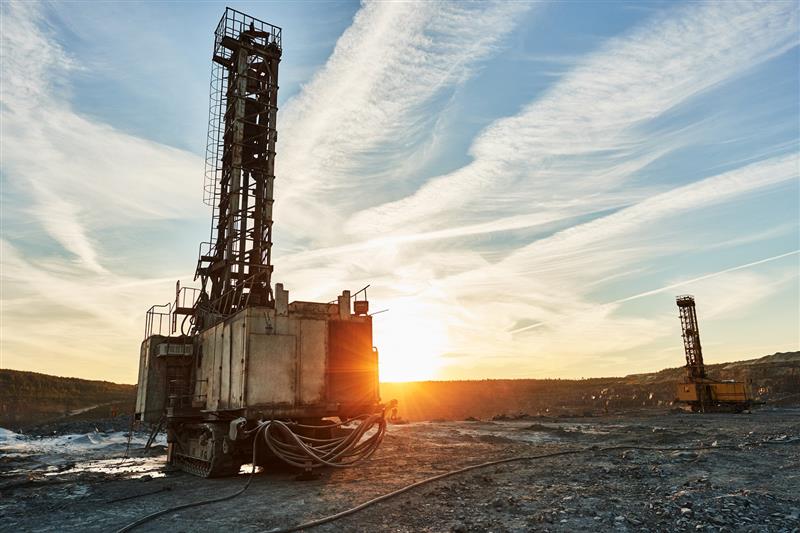
Exploration: Finding Uranium Deposits
Uranium exploration is a crucial first step in the lifecycle of uranium, involving several advanced techniques to locate viable deposits.
Airborne geophysical surveys are a primary method used in uranium exploration.
These surveys, including magnetic and electromagnetic (EM) methods, allow for the detection of uranium deposits deep beneath the earth’s surface.
Modern airborne techniques can penetrate up to one kilometer of sandstone cover, providing high-resolution imaging that guides direct drilling efforts (IAEA).
Geochemical sampling is another vital technique.
This involves analyzing soil, rock, and water samples for trace elements associated with uranium deposits.
Elements like uranium, boron, lead, nickel, and rare earth elements serve as indicators of potential uranium mineralization in the area.
The Athabasca Basin in Saskatchewan, Canada, is renowned for its high-grade uranium deposits.
This region is a focal point for many uranium exploration activities due to its rich reserves and favorable geological conditions.
The basin's deposits are typically found in unconformity-related zones, making it one of the most productive uranium mining areas in the world.
Other significant regions include the Orinoco Belt in Venezuela, the Kalahari Desert in Namibia, and parts of Australia.
Each of these areas is known for its substantial uranium reserves and ongoing exploration projects aimed at meeting global demand.
One of the most notable uranium discoveries occurred in the Athabasca Basin with the uncovering of the Cigar Lake deposit. This deposit is one of the highest-grade uranium mines globally, containing exceptionally high concentrations of uranium ore.
Advanced geophysical and geochemical exploration techniques played a pivotal role in its discovery, setting a benchmark for future exploration projects.
Another significant discovery is the Husab Uranium Project in Namibia, which is one of the largest uranium mines in the world.
The exploration process here involved extensive use of airborne geophysics and ground-based drilling, leading to the identification of substantial uranium reserves that contribute significantly to global supply (Seequent).
Mining: Extracting Uranium
Uranium extraction involves several advanced mining methods to efficiently and safely retrieve this valuable resource from the earth.
Open-pit mining is used when uranium ore is located close to the surface, typically less than 100 meters deep.
This method involves removing large quantities of soil and rock to access the ore.
The walls of the pit are mined in a series of benches to prevent collapse. Explosives are used to break up the rock, which is then transported to a processing facility (Cameco).
Underground mining is employed for deeper deposits, often more than 100 meters below the surface. Vertical shafts and horizontal tunnels are developed to access the ore.
Underground mining is employed for deeper deposits, often more than 100 meters below the surface. Vertical shafts and horizontal tunnels are developed to access the ore.
High-grade deposits like those at McArthur River and Cigar Lake in Canada use specialized techniques such as raisebore and jet-bore mining, which involve creating vertical tunnels through the orebody and using high-pressure water to extract the ore.
In-situ recovery (ISR), also known as in-situ leaching, is an advanced method where a solution, typically containing water mixed with oxygen or carbon dioxide, is injected into the uranium-bearing formation.
This solution dissolves the uranium, which is then pumped to the surface for processing. ISR minimizes environmental disturbance and does not produce waste rock or tailings.
Environmental safety is paramount in uranium mining. Open-pit and underground mining methods generate significant amounts of waste rock and tailings, which require careful management to prevent environmental contamination.
Tailings are stored in engineered facilities designed to isolate radioactive material and prevent groundwater contamination (NRC).
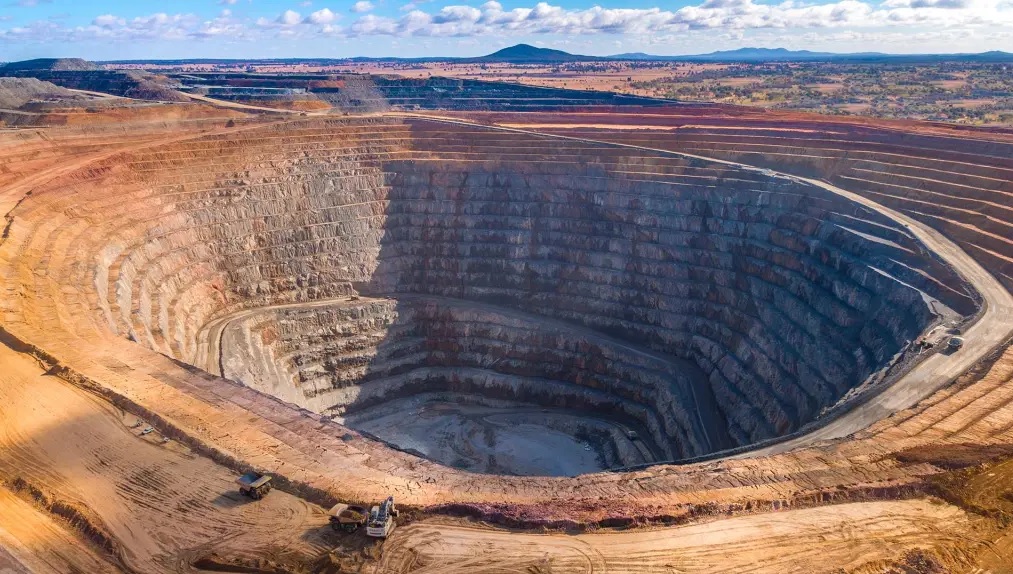
In-situ recovery offers environmental advantages by avoiding the excavation of large volumes of rock.
However, it requires rigorous monitoring to ensure that the lixiviant does not contaminate surrounding groundwater. Regulations mandate thorough environmental assessments and continuous monitoring to safeguard against potential impacts.
Technological advancements have significantly improved the efficiency and safety of uranium mining. Modern geophysical techniques, such as high-resolution airborne and ground-based surveys, allow for precise detection of uranium deposits, reducing the need for extensive exploratory drilling (IAEA).
Automated and remote-controlled equipment enhances safety in underground mining by minimizing human exposure to hazardous conditions.
Advanced processing technologies improve the extraction and concentration of uranium from ore, reducing waste and increasing yield.
By leveraging these technologies, the uranium mining industry can meet growing demand while adhering to stringent environmental and safety standards.
Milling: Processing Uranium Ore
The milling process for uranium involves several mechanical and chemical procedures to extract uranium from mined ore and convert it into a concentrated form known as yellowcake.
Uranium milling starts with the delivery of uranium ore to a mill where it is crushed into smaller particles.
This is a necessary step because the uranium concentration in the rock is very low, requiring large amounts of material to be processed to obtain a few kilograms of uranium.
The crushed ore is then treated with a chemical solution, typically sulfuric acid or an alkaline solution, to leach the uranium from the waste rock.
This process results in a fine slurry from which uranium is recovered and precipitated as uranium oxide concentrate (U3O8) (Nuclear Power).
The uranium oxide concentrate, commonly referred to as yellowcake due to its yellowish color, is a highly concentrated uranium powder.
The leaching process extracts up to 95 percent of the uranium from the ore, along with several other heavy metals.
The resultant yellowcake is then dried, heated, and packed into 200-liter drums for further processing.

This yellowcake is the intermediate product that undergoes further refining and conversion before being used in nuclear fuel production (Nuclear-Power.com).
Uranium milling generates significant amounts of waste rock and tailings, which contain most of the radioactivity and nearly all the rock material from the original ore.
These tailings must be managed carefully to prevent environmental contamination. They are typically stored in engineered facilities near the mine site, often in mined-out pits.
These facilities are designed to isolate the radioactive material and prevent it from leaching into the groundwater.
Additionally, modern milling operations include rigorous environmental monitoring and safety protocols to mitigate the potential impacts of radioactive waste (NRC).
Conversion and Enrichment: Preparing Uranium for Use
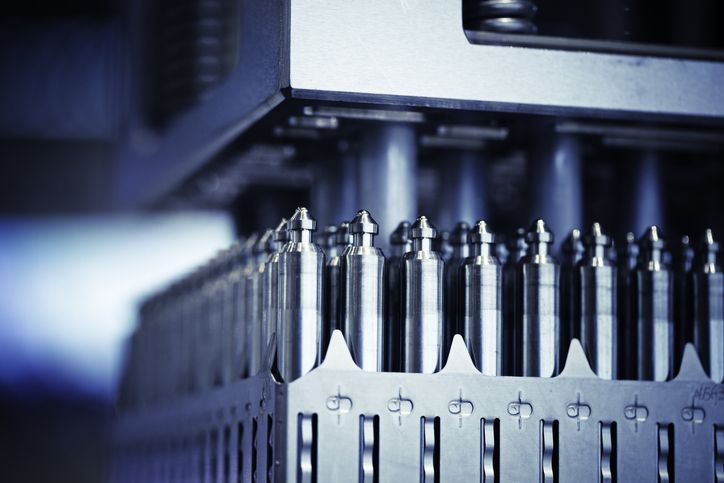
After uranium is milled into yellowcake, the next step is converting it into uranium hexafluoride (UF6), a crucial stage for preparing uranium for enrichment.
At the conversion facility, yellowcake (U3O8) is first refined to remove impurities.
This involves dissolving yellowcake in nitric acid, producing uranyl nitrate, which is then purified through solvent extraction.
The purified uranyl nitrate is then calcined to form uranium trioxide (UO3).
In the next phase, uranium trioxide is reduced with hydrogen to produce uranium dioxide (UO2).
This uranium dioxide is then reacted with hydrogen fluoride to form uranium tetrafluoride (UF4).
The uranium tetrafluoride is then fed into a reactor where it is exposed to gaseous fluorine, producing uranium hexafluoride (UF6).
Uranium hexafluoride is the only uranium compound that exists as a gas at relatively low temperatures, making it suitable for the enrichment process.
Once produced, UF6 is cooled and drained into storage cylinders where it solidifies.
The solid UF6 is then transported to enrichment plants, where it is heated to a gas and subjected to enrichment processes such as gaseous diffusion or gas centrifuge.
These processes increase the concentration of the fissile isotope U-235 from its natural level of 0.7% to about 3-5%, making it suitable for use as nuclear fuel (Nuclear Power, NRC, Uranium Producers of America).

Fuel Fabrication: Creating Nuclear Fuel
Enriched uranium hexafluoride (UF6) is transported to a fuel fabrication facility where it undergoes several steps to be converted into nuclear fuel.
At the fuel fabrication plant, the UF6 is heated to transform it back into a gaseous state.
This gas is then chemically processed to produce uranium dioxide (UO2) powder.
The uranium dioxide powder is pressed into small cylindrical shapes known as pellets.
These pellets are then sintered at high temperatures, over 2550 degrees Fahrenheit, to create dense ceramic fuel pellets (World Nuclear Association).
The ceramic pellets are subsequently loaded into long metal tubes made of a zirconium alloy.
These tubes are called fuel rods. The rods are then assembled into bundles called fuel assemblies.
Each fuel assembly is specifically designed to fit into a nuclear reactor and contains multiple fuel rods.
The dimensions and quality of the fuel pellets and rods are tightly controlled to ensure consistent performance and safety within the reactor (Department of Energy).
In a pressurized-water reactor (PWR), which is the most common type of reactor, each assembly contains between 150 to 200 fuel rods.
Boiling-water reactors (BWR), another common type, contain between 370 to 800 fuel rods per assembly.
The exact configuration and number of rods depend on the reactor's design and specifications (World Nuclear News).
Quality control and safety measures are critical throughout the fuel fabrication process.
Each step is carefully monitored to prevent contamination and ensure the integrity of the fuel.
This includes rigorous testing and inspection of the pellets, rods, and assemblies.
Safety protocols are in place to manage the risks associated with handling enriched uranium and to avoid nuclear criticality, which is an uncontrolled chain reaction.
Fuel fabrication facilities employ numerous safety measures to protect workers and the environment.
These include radiation shielding, secure containment areas, and strict operational procedures.
The facilities are also designed to handle and store nuclear materials safely, minimizing the risk of accidents and ensuring compliance with regulatory standards.
Nuclear Power Generation: Using Uranium
Nuclear reactors play a crucial role in harnessing the power of uranium to generate electricity.
Uranium is used as a fuel in reactors, where its atoms are split in a process known as nuclear fission.
This process releases a significant amount of heat, which is then used to produce steam. The steam spins a turbine connected to a generator, ultimately producing electricity (Department of Energy).
Nuclear reactors are designed to control the fission process and sustain a chain reaction at a stable rate.
Control rods, made of materials that absorb neutrons, are inserted or withdrawn from the reactor core to manage the fission rate.
The reactor core itself is typically made up of hundreds of fuel assemblies, each containing numerous fuel rods filled with uranium pellets.
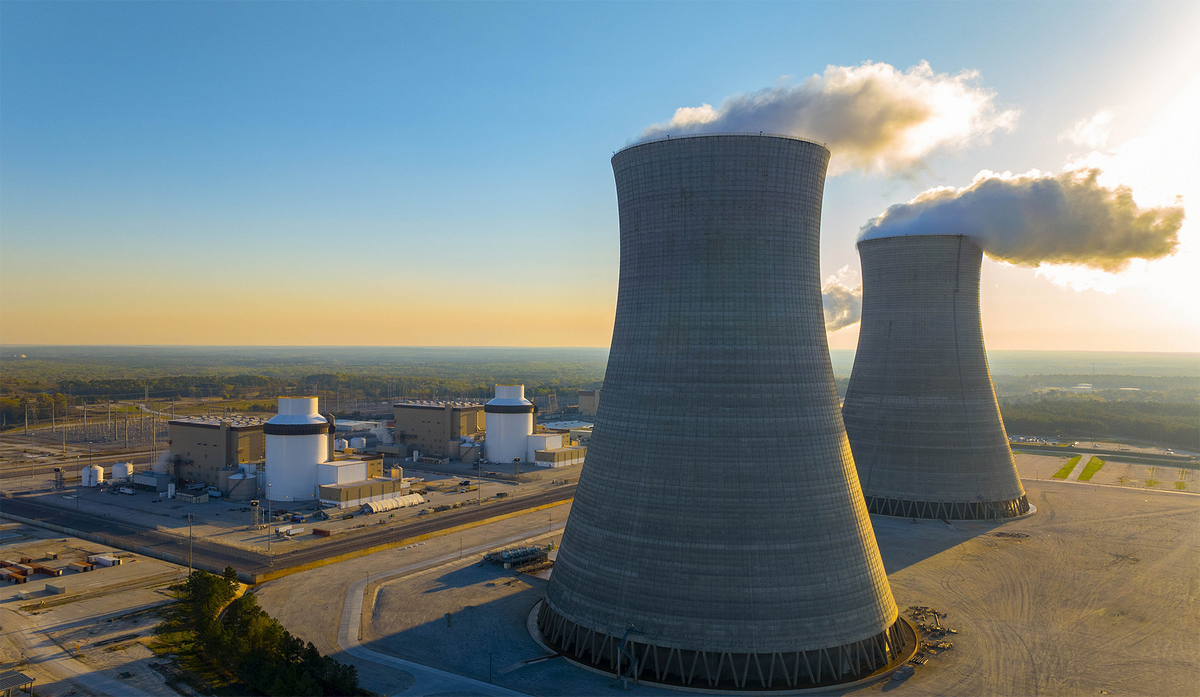
These fuel rods are submerged in water, which acts both as a coolant to remove heat and as a moderator to slow down neutrons, facilitating the fission process (Sprott).
There are two primary types of nuclear reactors used in power generation: pressurized-water reactors (PWRs) and boiling-water reactors (BWRs).
In PWRs, water is kept under high pressure to prevent it from boiling, allowing it to absorb heat from the reactor core.
The heated water is then used to produce steam in a secondary loop, which drives the turbine. In contrast, BWRs generate steam directly within the reactor vessel, which is then used to turn the turbine.
Both reactor types are highly efficient and capable of producing large amounts of electricity with minimal greenhouse gas emissions (MIT Technology Review).
Nuclear power offers several advantages, including a reliable and continuous supply of electricity, which is critical for maintaining grid stability.
It is also a low-carbon energy source, significantly reducing greenhouse gas emissions compared to fossil fuels.
However, challenges such as high initial costs, radioactive waste management, and public concerns about safety and potential accidents remain.
Despite these challenges, advancements in reactor technology and safety protocols continue to enhance the viability and appeal of nuclear energy as a sustainable power source.
Spent Fuel Management: Handling Used Nuclear Fuel
Spent nuclear fuel management is a critical aspect of the nuclear fuel cycle, encompassing storage, recycling, and disposal processes.
When nuclear fuel is spent, it is initially stored in spent fuel pools.
These pools are water-filled basins that provide cooling and shielding from radiation.
The water in the pools absorbs heat and radiation, allowing the spent fuel to cool down safely.
After sufficient cooling in the pools, spent fuel can be transferred to dry cask storage.
Dry cask storage involves placing the spent fuel in large, sealed casks made of steel and concrete.
These casks provide robust shielding from radiation and are stored in secure facilities, often at the reactor site.
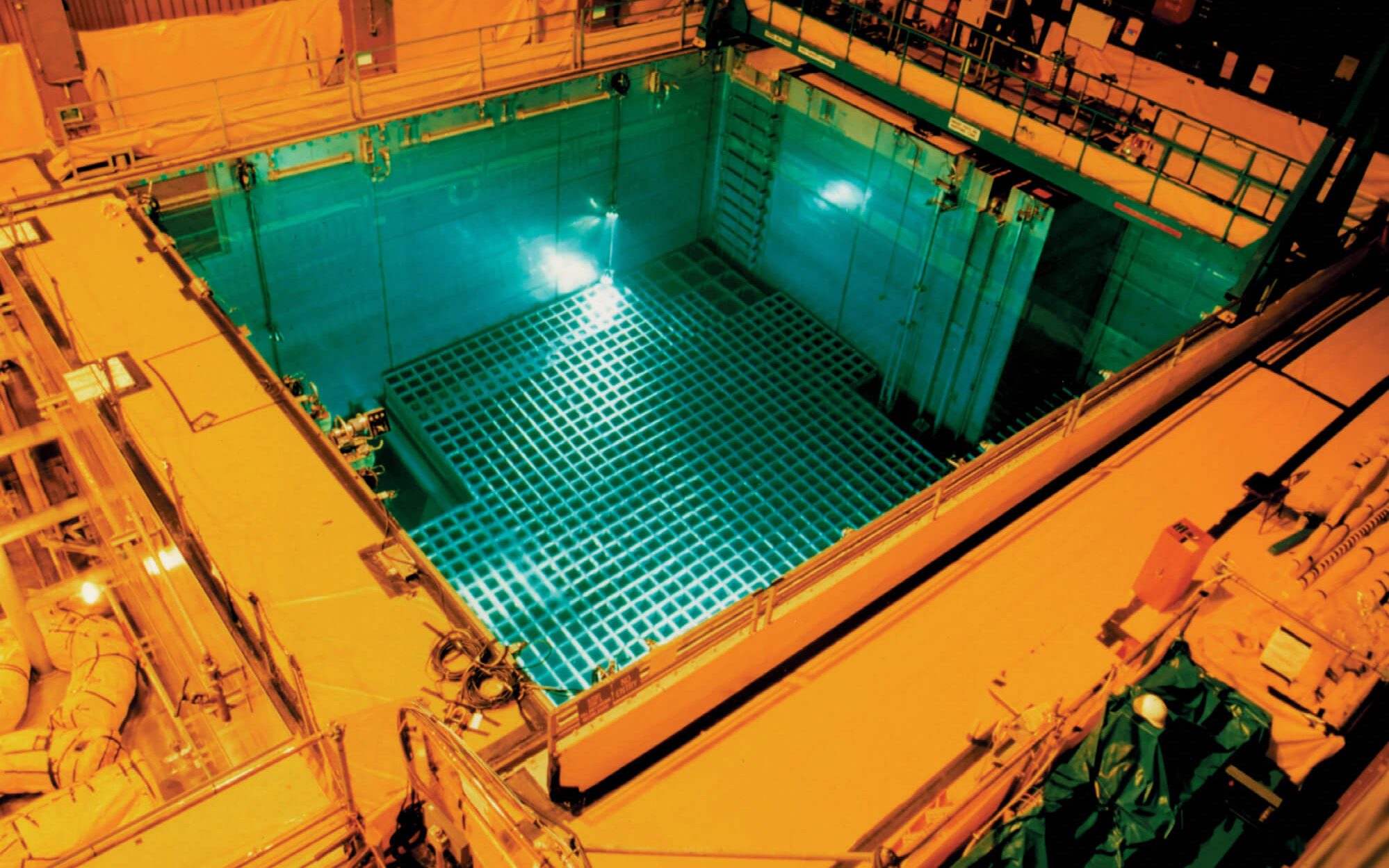
Dry cask storage is a temporary solution that ensures the safe containment of spent fuel while more permanent disposal solutions are developed (IAEA).
Long-term disposal of spent nuclear fuel involves deep geological repositories.
These repositories are designed to isolate spent fuel from the biosphere for thousands of years.
Countries like Finland and Sweden are making significant progress in developing such facilities.
The repositories are constructed deep underground in stable geological formations, ensuring that any potential release of radioactivity is contained and does not pose a risk to human health or the environment (IAEA).
Recycling or reprocessing of spent nuclear fuel is another important strategy.
This process extracts usable elements like uranium and plutonium from spent fuel, which can be fabricated into new fuel. Mixed oxide (MOX) fuel, which contains both uranium and plutonium, is one example of recycled nuclear fuel.
Reprocessing not only reduces the volume of high-level waste but also extends the energy derived from the original uranium ore (Department of Energy).
However, recycling processes are complex and require advanced technologies. Research and development are ongoing to improve the efficiency and safety of these processes. Some innovative approaches aim to recycle other long-lived radionuclides to further reduce the radiotoxicity of the waste.
Overall, managing spent nuclear fuel involves a combination of interim storage solutions, advanced recycling techniques, and the development of permanent disposal facilities.
These strategies ensure the safe, secure, and sustainable management of spent fuel, supporting the long-term viability of nuclear energy.
Decommissioning: Closing Down Uranium Facilities
Decommissioning a nuclear facility is a complex, multi-step process that ensures the safe removal of radioactive materials and the restoration of the site for future use.
The process begins with detailed planning and preparation, which involves assessing the facility’s condition, obtaining necessary permits, and outlining the required work.
This phase includes developing a comprehensive decommissioning plan, safety evaluations, radiological assessments, and waste management strategies (Nuclear Power).
Once a plant is permanently shut down, the reactor is defueled by transferring the nuclear fuel to spent fuel pools for cooling.
After sufficient cooling, the fuel is moved to dry cask storage.
This process significantly reduces the radiation levels in the facility, making subsequent decontamination and dismantling safer for workers (NEI).
Decontamination involves removing residual radioactive materials from plant surfaces, equipment, and systems using chemical or mechanical processes.
Following decontamination, the dismantling phase begins, which may involve cutting and disassembling plant structures using conventional or remote-controlled techniques.
This step generates various types of radioactive waste, which must be handled, stored, and disposed of according to strict regulations (IAEA).
Throughout the decommissioning process, environmental safety is paramount.
Waste management strategies are employed to ensure that low-level, intermediate-level, and high-level waste are appropriately processed and stored.
Low and intermediate-level waste are typically disposed of in near-surface repositories, while high-level waste, such as spent nuclear fuel, is destined for deep geological repositories.
The final step in decommissioning is site restoration.
This may involve soil remediation, landscaping, and the construction of new facilities, depending on the intended future use of the site.
Regulatory approval is required to confirm that the decommissioning process is complete and that the site is safe for future use.
The decommissioning process can take several decades, but it ensures that the site is free from residual hazards and ready for other uses.
Successful examples of decommissioning projects include the dismantling and site restoration of reactors like Big Rock Point and Maine Yankee, which have been returned to a state suitable for unrestricted use.
Conclusion: The Future of Uranium in Energy
The lifecycle of uranium, from exploration and mining to processing and utilization in nuclear power generation, is integral to the global energy landscape.
Uranium's journey involves advanced techniques and technologies that ensure its safe and efficient use as a vital energy source.
As the world shifts towards cleaner energy solutions, the importance of uranium in reducing carbon emissions and providing reliable power is increasingly recognized.
The future prospects for uranium in the global energy mix are promising.
With the growing demand for sustainable and low-carbon energy, nuclear power is set to play a crucial role.
Advancements in reactor technology and improved safety measures enhance the viability of nuclear energy, making it a key component in the transition to a greener future.
Countries worldwide are investing in nuclear power infrastructure, ensuring a steady demand for uranium.
Investing in sustainable uranium practices is essential for meeting future energy needs.
As uranium continues to be a cornerstone of clean energy, there are significant opportunities for growth and innovation in the sector.
Stakeholders are encouraged to invest in technologies and practices that promote the safe, efficient, and environmentally responsible use of uranium.
By doing so, we can ensure a sustainable and secure energy future for generations to come.
Subscribe for the Latest Generation Uranium Investor Updates
Subscribe for the Latest on
Generation Uranium's Advancements
Office: 6th Floor,
905 W Pender St,
Vancouver, BC
V6C 1L6
Email: [email protected]

